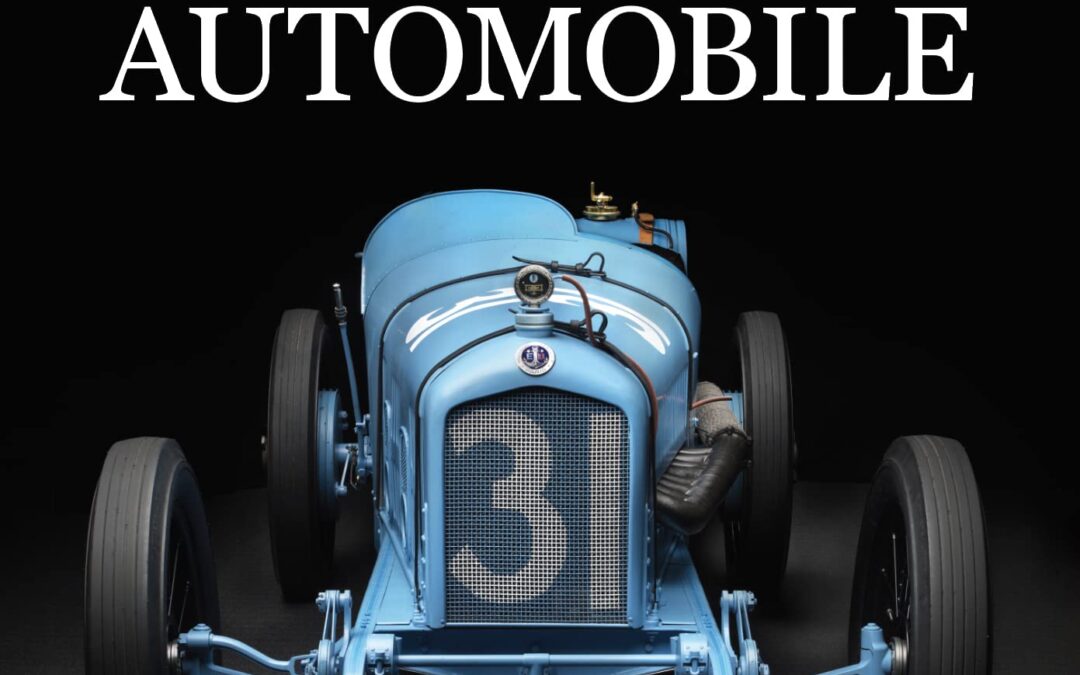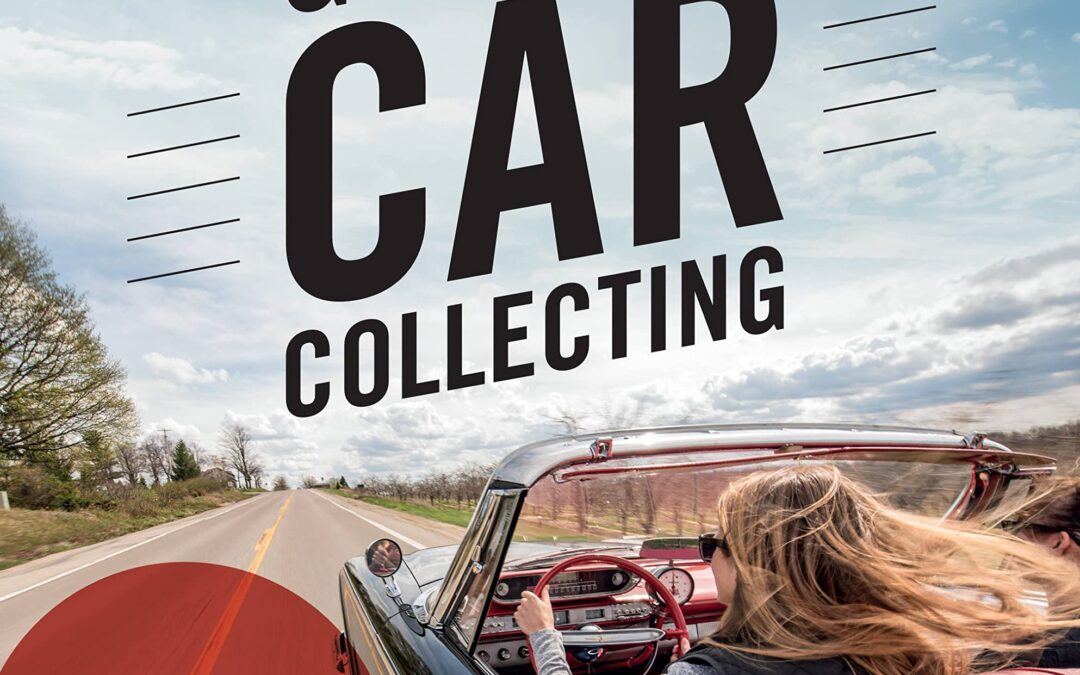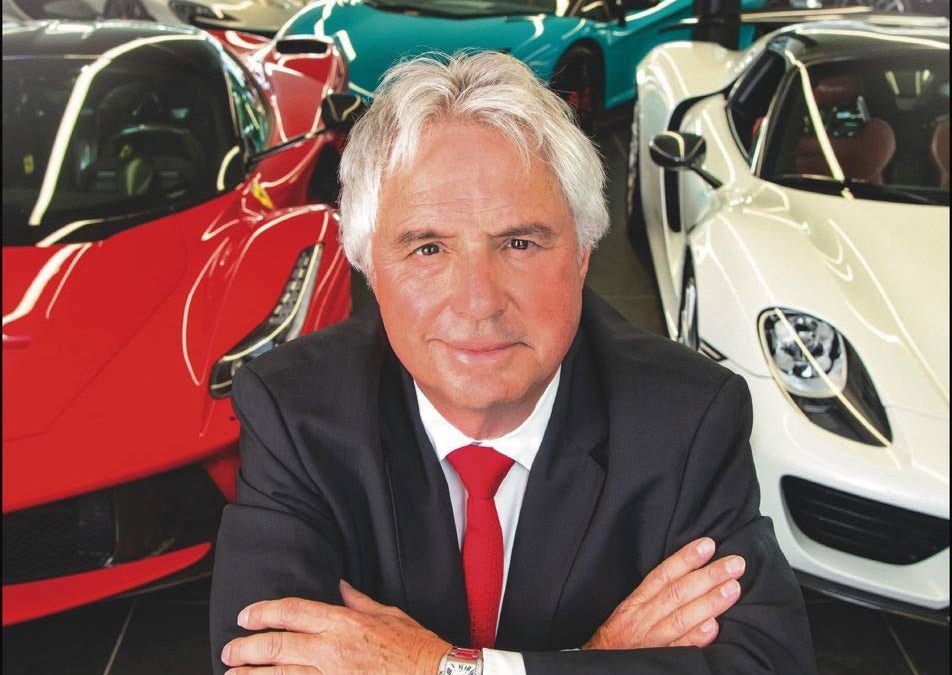
In the last one hundred years, cars have shaped our lives. Other everyday cultural artifacts, such as watches, telephones, musical instruments, and televisions, have certainly had influence, but the car is by far the most significant. Now, change is coming for the car, as it is for so many other industrial artifacts. Once, cars were distinct machines. Now, they are evolving into multifunctional digital devices. New fuels, new modes of travel, and new technologies are disrupting the traditional role of the much-loved family car.
What is to become of this material legacy? Should we really let go of it? Without memory, personal and shared, we lose our way, our individuality, and our culture. This proposition is at the heart of The Archaeological Automobile.
Miles C. Collier’s landmark approach uses an “archaeological mindset” to interpret the automobile as a cultural artifact in six themes:
The Development of the Automobile describes how the car emerged from a pressing human need for mobility, tracing our relationship with horses, our invention of the bicycle, and how we turned our backs on both as daily transport for the allure of the car.
The Rise of the Collectible Automobile asks how and why ratty relics decaying in recycling yards can become valuable and treasured collectibles. It reveals the effect of cultural influences on our perception of cars and on the dynamics of the collector car market.
The Archaeological Mindset picks up a wrench, gets into the workshop, and tracks the restoration of a 1919 Ballot Indy car using hands-on experience and background research while deploying the “archaeological imagination.” The archaeological clues are in the detail.
Collecting and the Archaeological Automobile deals with the characteristics of collecting. Why do we accumulate “stuff”? Is it greed? Is it passion? Is it a desire for legacy? And what makes a “good” collection? Is it bling? Is it style? Is it material worth? The answer lies in connoisseurship.
Restoring the Archaeological Automobile debates the merits of diverse restoration strategies and the reasoning behind them, including the tricky question of how to repaint the tilt-front nose of a 1964 Alfa Romeo GTZ racing car and still preserve the evidence of forty years of accumulated sandblasting and chipping.
The Archaeological Automobile of the Future is a call to action. Cars as we know them are customarily trashed, government regulations encourage indifference, and the skills and knowledge associated with fixing them are slowly vanishing as we lose older generations of experienced craftsmen. How can we preserve humanity’s treasure trove of automotive knowledge for generations to come?
Filled with engaging stories and practical examples, this is a handbook of the most thoughtful practices, not just for automobile owners and the historical car industry, but for collectors, professionals, and users of all kinds of industrial era artifacts.
The Archaeological Automobile combines scholarship, pertinent anecdotes, style, and experience to provide a stimulating account of why we should all be archaeologists now.

Satisfy your dream collector-car desires with this one-stop reference for starting or expanding your collection beyond traditional classics and muscle cars.
Focusing on the interests and needs of Generation X and Millennial car collectors, The NextGen Guide to Car Collecting offers a concise history of car collecting to present day, guidance on car buying and living the car-collector life, and an overview of collector cars with a focus on cars built from the 1970s through the 1990s while also touching on more contemporary cars. Chapters highlight Japanese, American, and European cars, particularly those models that have experienced the greatest growth in collector interest over the past decade.
The NextGen Guide to Car Collecting explores the many ways the Internet and social media have changed the classic car marketplace. You’ll learn how to buy a classic car online without suffering buyer’s remorse, as well as the four critical keys to a happy collector-vehicle relationship: 1) possessing discretionary cash for the initial purchase; 2) obtaining a thorough knowledge of the car and its ownership; 3) the critical pre-purchase inspection; and 4) access to a work space.
You’ll also find out why the popularity of late twentieth-century specialty cars will continue to grow (think increasing electronic complication and the still-large number of enthusiasts for whom “self-driving” means driving themselves) and explore the attributes that makes these cars desirable collector vehicles.
In addition, the book looks at the significant increases in quality and reliability of post-1970s machines and how that impacts their collectibility. Finally, learn why expectations that your newfound classic could outlast our current crop of lithium-ion-dependent electric cars may not be unrealistic: recent developments like ride-hailing and sharing services; expanded public transit; rental bikes and scooters; and garage condos and other storage options could actually extend the life of your “new” classic permitting you to truly tailor the use of your classics.
Whether your collection requires a one-stall garage or a pole barn, the practical, useful information and keen perspective of The NextGen Guide to Car Collecting will ensure you pull this volume from your shelf time and again.

The car world is full of fascinating characters, but few have a story to tell quite as remarkable and inspirational as Tom Hartley.
Walking out of school at the age of 11, unable to read or write, Hartley set up his own business buying and selling cars. From that moment, he defied logic and ripped up the rule book on his way to the top. Today he runs one of the most successful independent family run performance and luxury car businesses in the world. He has built up an unrivaled reputation as “The Dealmaker.”
Tom has been at the top for over 40 years, survived and thrived through four recessions, and overcome three life threatening illnesses. In his own brutally honest words, Hartley tells his gripping story of a boy from a traditional Romany family who swapped the classroom for the cut-throat world of Glasgow’s car auctions, buying and selling his first car at the age of 12. Having decided to drive himself around illegally, he was only 15 when he had his first car crash, and they don’t come more spectacular than writing off a Ferrari Dino – nothing has ever been normal in the world of Tom Hartley!
Hartley had made his first million by the age of 17, but soon suffered major setbacks as his business went bust, and he found himself at risk of losing his sight without major surgery. Hartley started all over again, living in a mobile home with his wife and working from the back of a car. He had gone from hero to zero, but his burning desire to be the best saw him climb his way back to the top. His ability to clinch deals in some of the most bizarre places has become legendary, like buying a car in a sauna, while stuck in a traffic jam on a motorway, and even in a swimming pool!
Family has played a key part in the Tom Hartley story, his wife has been at his side all the way, and his two sons have followed closely in their father’s footsteps. Indeed Tom’s belief in family is one of the inspiring messages that comes through.
Hartley’s inspirational story is about the unshakeable belief in his own abilities, from a precocious schoolboy who had a dream, and then through sheer hard work and a burning desire to make the dream come true. This is not just a book for car enthusiasts but for anyone who has dared to dream. It’s a story that will inspire and motivate, and proves you can make the wildest dream come true if you want it badly enough.
Tom’s remarkable story is written with the collaboration of journalist Ken Gibson, for 24 years, award-winning Motoring Editor of The Sun newspaper.





